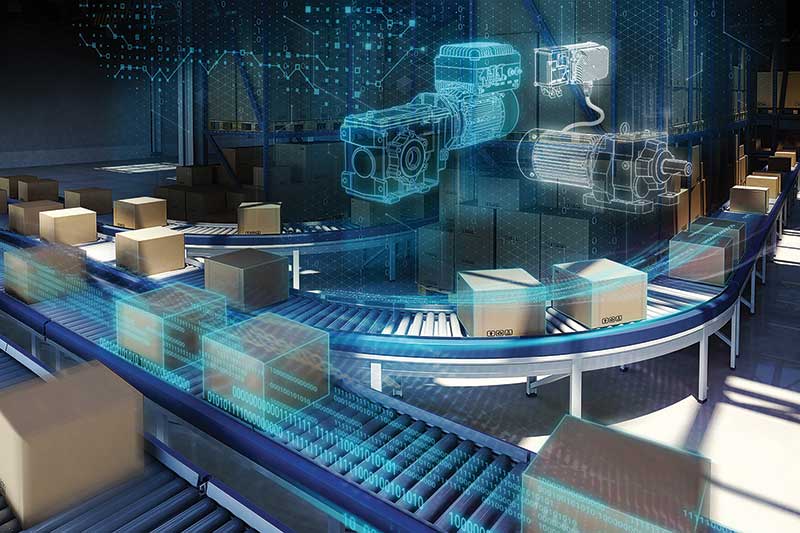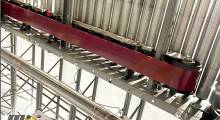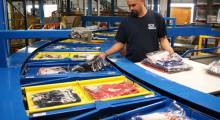If you want to know where things are headed, sometimes it’s best to listen to someone with 45 years of perspective. In this case, that’s Brad Gossard, director of ModSort sales at Regal Rexnord.
When asked what’s ahead for power transmission equipment, Gossard said this: “With the new technology coming along, operations managers are sure to focus on improving what they’ve got in place today. They’ll be looking for more data than ever about their operations, improved processes and solid ROIs.”
At that, he paused before adding, “most people have been riding horseback. But now they’ve got a chance to get on a rocket ship.”
That’s not a bad parting shot from someone who is retiring this month. But while Gossard is on to other new adventures, the storyline in motors, gears and gearboxes will have a few of its own.
Matt Prellwitz, drive technology product manager at Beckhoff USA, says: “Going forward, power transmission equipment is all about simpler solutions, easier to use technologies and greater insights into the current and future status of motors, gears and gearboxes.”
Drilling down from there, Mathew Hanson, Bison’s manager of industrial applications, talks about VF synchronous motors, increased connectivity and a new focus on sustainability. Interestingly enough, the three are connected, much like most everything else in power transmission equipment.
Before we get into those details, two notable business shifts occurred in power transmission equipment.
Late last year, AMETEK Dynamic Fluid Solutions and Bison Gear and Engineering Corp. combined to create Bison, a business of AMETEK Inc. The new business, simply called Bison, says Matt Fuss, division vice president and business unit manager, focuses on manufacturing motors and related equipment and system integration.
Meanwhile, Siemens has formed a new intralogistics vertical focused on materials handling hardware and software automation and service solutions in the United States. Sustainability and digitization figure prominently in these power transmission and related solutions. Joel Thomas is head of the intralogistics vertical.
These realignments are not surprising given market projections from Interact Analysis. The market is shifting around a bit these days.
While geared motors and industrial gears advanced nearly 4% last year, 2024 sales are expected to decline about 2%. However, research analyst Samantha Mou projects compound annual growth above 4% through 2028.
Clearly, the next wave of power transmission investment is upon us. Now, for the details on what this all means to you.
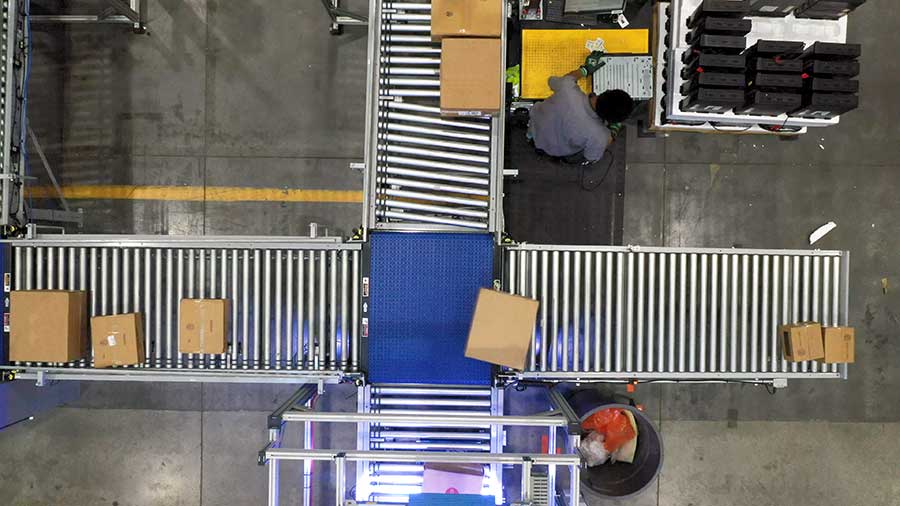
New profile
When it comes to power transmission equipment, nothing is an island. That’s despite the fact that many have long thought of this equipment as a behind-the-scenes player in materials handling efficiencies.
Consider what a major satellite broadcast company did recently, explains Gossard. In a receiving area, the company moved from manual labor to sort and scan large quantities of communications hardware to motorized divert and transfer modules throughout the facility. Yes, the realized 25% gain in productivity was expected. But the real hero of the application are motorized drive rollers (MDRs) with 24-volt DC motors capable of moving and diverting inventory on command.
Two key words here are safety and energy efficiency.
To begin, the MDRs operate with only sufficient torque to move the inventory on the conveyor. In this case, that means workers can stop the MDR with their hand without fear of injury.
Beyond that, the MDRs require only the energy needed for the job at hand. That not only minimizes energy consumption, but adds a sustainability angle to use of the MDRs.
Gossard also points out that a networked control card plays an important role in motor operation. Each card controls two MDRs and changes specific motor parameters on the fly. They interface with a programmable controller over Ethernet. Quite simply, the combination of MDRs, their motors and control cards set the table for current and future gains in productivity.
Energy and sustainability
As Hanson of Bison points out, a strong emphasis these days is on sizing motors for the application. “It’s been too easy in the past to spec motors that are too big or too small. A sizing guide ensures the right-sized motor is used for each application,” he explains.
The objective is to run the motor at the optimum power rate and power consumption level. That ensures not only energy savings, but motor optimization for long life and extended reliability.
One of the shifts here, says Hanson, is the recent introduction of variable flux (VF) synchronous motors. He says they tend to run cooler than induction motors and don’t have brushes to wear out. Lower cost is another benefit.
Bison refers to VF synchronous motors as maximum horsepower, minimum size motors. They run off a three-phase inverter and are more than 60% lighter and 55% smaller than comparable three-phase induction motors.
Most importantly, explains Hanson, they run synchronously with the power provided to it, unlike other motors that change speed dependent on the load carried.
Meanwhile, James Chandler, key markets manager at NORD Drivesystems, talks about its IE5+ synchronous motors that enable reliable movement of loads based on their constant torque and high overload capacity.
“These days, sustainable practices are a requirement, not a nicety,” Chandler says, “staying at the forefront of efficiency standards keeps systems running at peak performance and cost effectiveness.”
But let’s not get ahead of ourselves. This isn’t the end of induction motors, either, Hanson adds. “Induction motors will continue to be the life blood of conveyors going forward. But now there is a viable alternative that offers specific benefits,” says Hanson.
Prellwitz of Beckhoff also sees a future for servo motors due to improvements being made with them. Key here is the elimination of control cabinets, greatly simplifying the system from installation to daily operation.
For instance, Beckhoff’s EP7402 Ether CAT box offers two outputs with an integrated MDR controller for the direct connection of 24-volt as well as 48-volt DC conveyor roller motors.
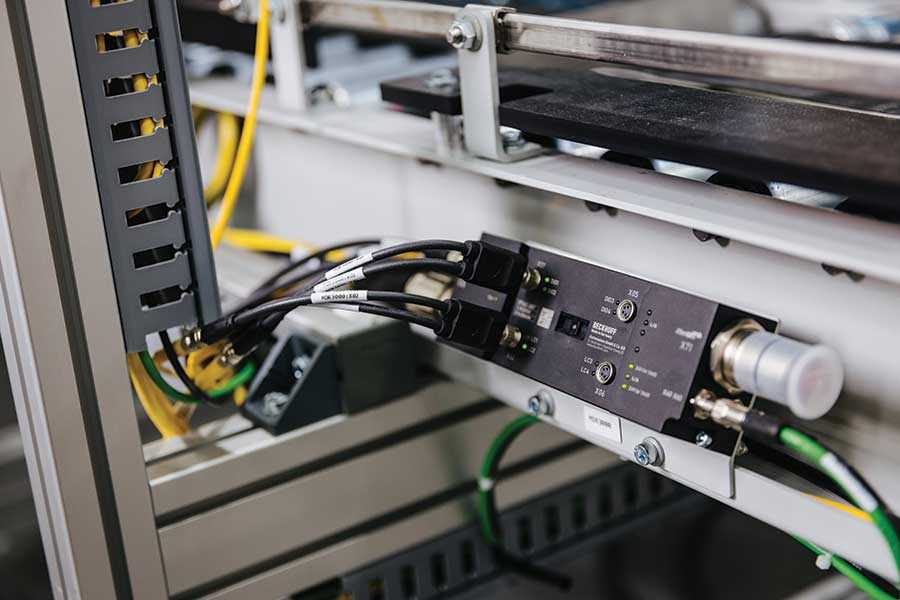
Networked control systems manage operation of motorized drive roller conveyors.
Source: Beckhoff Automation
Compatibility with 48-volt MDR motors is especially important as these become more widely used in applications requiring higher velocity and torque.
Yet another advance from Beckhoff, says Prellwitz, is a universal regenerative unit. It feeds regenerative energy back into the supply grid and is compatible with servo drives including multi-axis servo systems. Multiple regenerative modules operating in parallel ensure the regenerative power adapts to the needs of the motors.
Connectivity and IoT
Let’s take a step back for a minute from individual motors and instead look at an e-commerce facility, for instance, that has hundreds, if not thousands of motors on miles and miles of conveyor.
Now for the question everyone wants answered in real time: Which motor(s) is going to need attention in the next hour? Using binoculars to find a puff of smoke is not the answer.
This is where the Internet of Things (IoT) and connectivity enter the motor picture. They are all about the health of all motors, explains Bison’s Hanson.
“IoT was effectively a buzzword for a while in automation and controls circles. But not anymore,” says Beckhoff’s Prellwitz. “That said, we are still in the early days of implementation here. And there’s more to it than sticking sensors on every power transmission unit. But it is possible to collect the data and analyze it with a very measured approach tied to specific metrics and goals.”
NORD calls it condition monitoring for predictive maintenance.
“In condition monitoring, operating and status data are recorded regularly or permanently to optimize the operational safety and efficiency of machines and systems,” says Tony Pariseau, NORD’s key market specialist for the food and beverage industry. “It allows for maintenance to be status-based rather than time-based, reducing downtime and material costs.”
Benefits include condition- not time-based maintenance, avoidance of unplanned downtimes, and increased service life of power transmission equipment.
Or, as Bison’s Hanson says, “this is about the health of all motors, gears and gearboxes.”
That’s the big picture, for sure. And it typically requires some up-front editing to make plausible.
Quite frankly, the undertaking is enormous. So, Prellwitz advocates a bite-sized approach. Rather than taking on the entire facility at once, he recommends starting with a stretch of conveyor and a manageable number of data nodes. This restricts the data gulp and makes data analysis possible rather than just plain overwhelming.
Fortunately, several tools are available to get started. Beyond sensors on the equipment, Beckhoff, for one, offers a range of hardware and Twin CAT software solutions to collect, communicate and connect data points and data.
Prellwitz says PC-based control packages assemble big data, develop pattern recognition as well as condition and power monitoring. Software libraries are also available for advanced analytics and communication between controllers and cloud-based services.
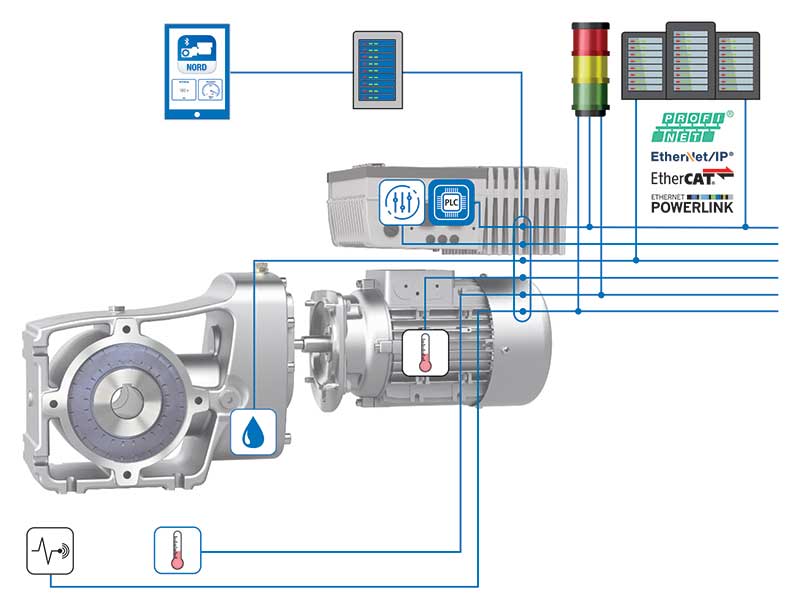
Clearly, this is connectivity on a grand scale. But it’s also the currency of future power transmission equipment efficiency at most any scale. And just as motors, gears and gearboxes continue to evolve, so will the ability to keep it all running not just efficiently but sustainably.
Article topics
